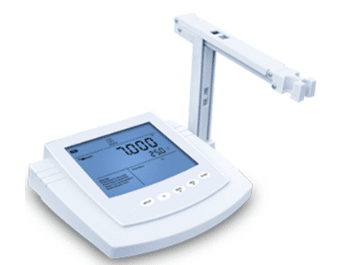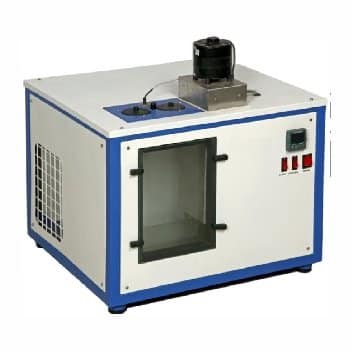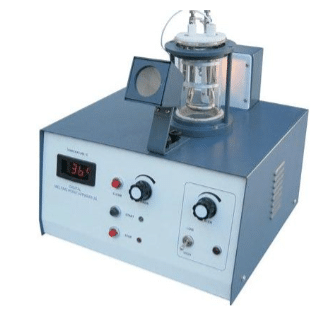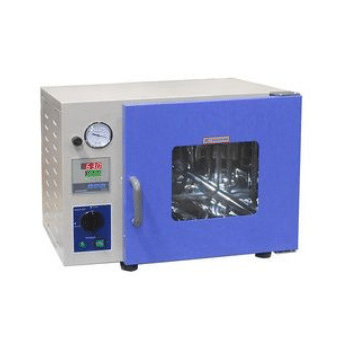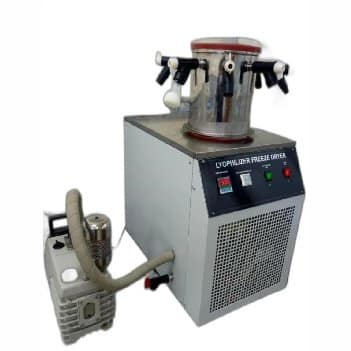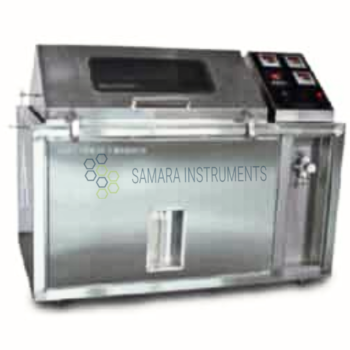
Salt Spray Test Chamber
A salt spray test chamber plays a crucial role in examining the corrosion resistance power of a metal material and finding out the strength of the surface coating or external layer. Read more
A salt spray test chamber plays a crucial role in examining the corrosion resistance power of a metal material and finding out the strength of the surface coating or external layer. This instrument is prevalent in the real estate industry to assess the durability of materials, the strength of the stain, paint materials, and various external surface layers. With this instrument, we can examine whether a material can withstand the salty environment, marine environment, automotive industry, or any harsh environment or not.
This test chamber provides a great result to the manufacturing industry, quality control department, and researchers on how different metals behave differently in salt-laden environments, marine environments, etc.
Components of salt-spray test chamber:
This instrument is made according to the ASTM B 117 system. It has an FRP double wall, PU painted outer surface with a salt surface, water reservoir system with a humidifier. Automated water level restoring system and, temperature-controlled heat-making system are present in the equipment. The main fog spraying nozzle is crucial to spray water. To maintain pressure balance in the sprayer nozzle, there is a pressure regulator and gauze.
Digital time totalizer, and temperature-controlling PH indicators are provided within the salt-spray test chamber to maintain balance within the instrument. A Dome is lifting the lifting-controlling system and sample holder. Sometimes there are low air pressure indicating buzzer along with an auto-filled humidifier tank. ASTM 117-based coating system, pipe steel, and laboratory equipment are important parts of the salt-spray test chamber.
Salt-spray chamber packaging system:
Within the packaging of the salt-spray chamber, there is a salt-spray cabinet, funnel, measuring cylinder, hose clamp, guidebook, or manual calibration certificate.
Parts required to perform salt-spray tests:
Sodium-chloride salts
MS panels
Distilled water
X-Cut corrosion test knife or stencils
Wax or gum tape for masking the material
Compressor
How does a salt spray chamber work?
The salt-spray chamber is composed of a humidifier tank. It sprays the NaCl (Sodium chloride) solutions to the testing materials and its reaction is assessed in the artificial marine or salty environment. To ensure reproducibility and persistence in the marine environment, a specific testing environment is created within the salt-spray chamber.
Test samples are prepared very carefully before introducing them to the salt-spray chamber. The duration of the examination varies according to the material and industry-specific standard rules. After completion of all steps, test samples are exposed in the salt-spray chamber with complete monitoring of the internal air pressure or others of the chamber. All the changes after the salt spray like rust, blistering, etc are recorded as the reaction of the salt spray. From such reactions, all the changes are utilized to assess the strength of metallic samples in marine environments or other natural and artificial environments.
Such tests provide us with complete information regarding corrosion resistance power and, the effectiveness of the external coating, making complete information regarding the quality or design of the products with its further improvisation.
Features & specifications:
- Salt-spray chamber is important for corrosion-free construction.
- Sprayer nozzles
- Temperature and humidifier controlling system
- Programming controlling system
- Compressed air supply system
- Safety lock system
- Exhaust system
With time, salt spray chamber utilization is very popular to assess corrosion withstanding power. Please follow the guidebook or manuals for more information.
Utilization of the salt-spray chamber:
This instrument is utilized in the automobile industry, real-estate or construction industries as well as the cosmetics industry. Here all the materials are examined whether they are sufficiently corrosion-resistant or not.
| Model No | SI - SSC108 | SI - SSC150 | SI - SSC270 | SI - SSC400 |
|---|---|---|---|---|
| Capacity | 108 Liters | 150 Liters | 270 Liters | 400 Liters |
| Inner Box Size (L x W x H) | 600 x 450 x 400 mm | 95 x 550 x 300 mm | 900 x 600 x 500 mm | 1200 x 850 x 500mm |
| Temperature Range | 35°C~55°C | |||
| Temperature Fluctuations | ≤±0.5°C | |||
| Temperature Uniformity | ≤±2°C | |||
| Temperature Precision | ±1°C | |||
| Equipment Material | Both inside and outside shell adopt imported P.V.C rigid plastic board, and tank cover uses imported transparent P.V.C. rigid plastic board | |||
| Test Chamber Temperature | Salt Spray Method (NSS ACSS)35±1°C Corrosion-resistant Testing Method(CASS)50±1°C | |||
| Brine Temperature | 35°C±1°C | |||
| Spray Quantity | 1.0~2.0 ml / 80cm2 / hr | |||
| pH value | Salt Spray Method (NSS ACSS6.5~7.2) Corrosion-resistant Testing Method (CASS)3.0~3.2 | |||
| Multiple Safety Protection Devices | Current discharge protection, over pressure protection, over temperature protection, overload fuse protection | |||
| Air pressure | 1 Kg | |||
| Nozzle | Glass Nozzle | |||
| Insulation | PVC | |||
| Control Panel | PLC Based Control Panel | |||
| Display | LCD Display | |||
| Lid Cover | PVC | |||
| Drainage | Solution and water drain out tap | |||
| Atomizer | Glass | |||
| Air Regulator | Precise regulator w/ gauge ranging from 0 - 50 psi | |||
| Power Supply | AC220V,10A | AC220V,15A | ||
- Corrosion-Resistant Construction
- Transparent Viewing Window
- Spray Nozzle System
- Temperature and Humidity Control
- Test Specimen Racks
- Programmable Control System
- Digital Display and Data Logging
- Compressed Air Supply
- Exhaust System
- Water Level Indicator
- Safety Interlocks
You May Also Like


